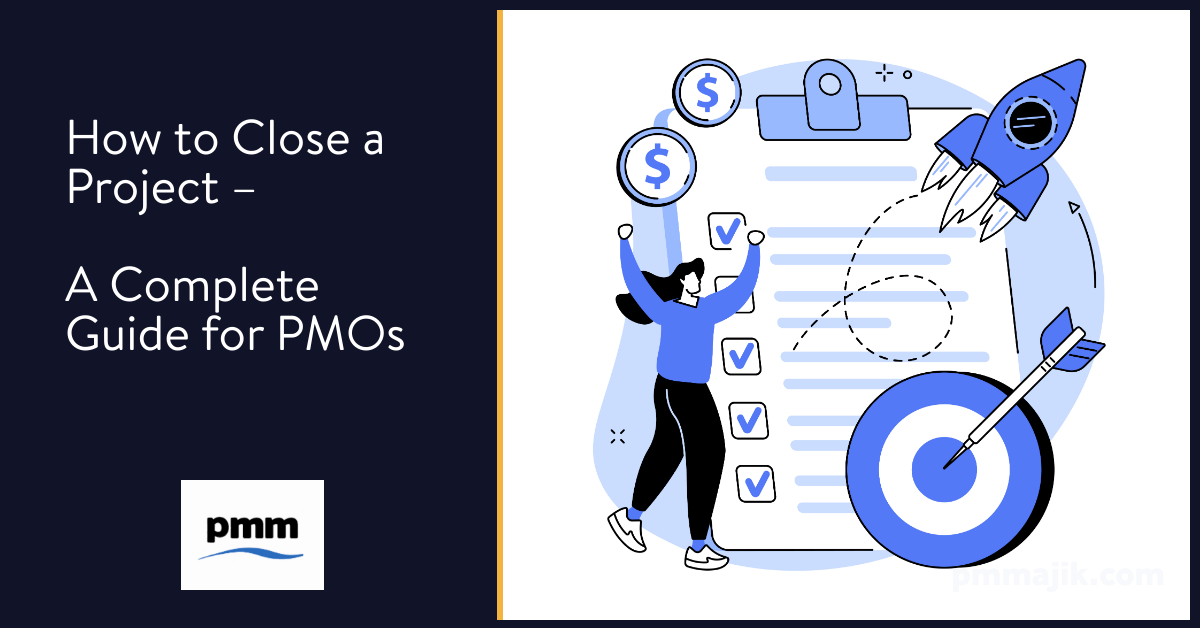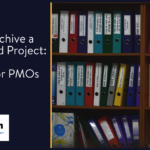Once a project finishes its last deliverable, it’s not time for project teams and your project management office (PMO) to sit back and relax. There’s one final step to round off a project so we’ve got a complete guide for PMOs on how to close a project.
Many people see a project closing process as a dull administrative task that can be rushed through to get to the next project. This undersells the value of closing a project effectively, especially for a PMO.
Closing a project is a vital step to give accurate data for analysis and to ensure wins and mistakes are equally learned from. To help you get to grips with your project closing process, we’re going to look at:
- An overview of how to close a project
- Why project closing is an important process
- Seven steps that your PMO and projects need to complete a project closure
Helping you to get the most value out of the project completion.
What are the steps for a PMO to close a project?
Having a project closing process in place, and making sure that it gets followed, makes sure that your projects get neatly tied up.
Project closure is the last step in the project lifecycle and is as important as any other element. The purpose of closing a project is to:
- Assess budgets, timelines, and other KPIs
- Complete due diligence on processes
- Review the wins and weaknesses
- Offer praise, rewards, and feedback
Much of this work will need to be carried out by the project team and the project manager, but it’s a process your PMO should outline and own. This is because the information generated is needed by your office to analyse trends, complete reports, and make improvements.
At the end of your project completion process, you should have sign-off from stakeholders, all the plans will be completed, and all payments in and out will be made.
Why does a PMO need a project completion process?
Usually, a PMO is responsible for the completion of project processes so you need to define what closing out a project looks like. It’s not just a paper-pushing exercises, though.
The benefits of your office and your project managers knowing how to close a project include:
- You can understand what went well and what parts of your PMO processes need improvements.
- You can release the resources from the project, such as people, hardware, and contractors.
- The people taking over long-term operations of the deliverable will be fully in charge.
- You will mitigate risks of ongoing support being requested from your PMO or project staff.
Overall, a completed and closed project allows you to fully evaluate its success and, by extension, the success of your PMO as well.
7 steps to close a project
There are seven tasks you need to complete to wind up a project completely. Ensure that each is laid out in your project closing process so your PMs and the PMO staff working on the project don’t miss anything.
- Transfer the deliverables to your customers, whether that’s passing it over to the operational manager in the business or handing it over to an external client with everything they need to succeed.
- Confirm the final completion by having the right people give their approval and sign-off. Be sure to check the contracts and agreements so the right people give their assent to closing the project.
- Review the contracts and documentation for other steps to close the project, such as settling invoices and requesting payment from the customer.
- Release resources to move on to new projects, return to their usual business unit, or to complete a contract so your suppliers are no longer on standby.
- Complete a project review to assess the performance against the project KPIs and the wider objectives of the project. It’s also a good time to complete a performance review with project managers if it’s been a big project.
- Archive documents in line with the PMO and business processes. Make sure that everything has been recorded to enable your PMO to analyse the final project.
- Celebrate wins and give feedback to everyone involved in the project, including giving awards and recognition to valued people. The end of a project should also be communicated to the C-suite to increase their engagement with your work.
How does a PMO close a project?
In our complete guide to how to close a project we’ve looked at why you need the process in place and what it should look like. In coming posts, we’ll cover each step in more detail.






